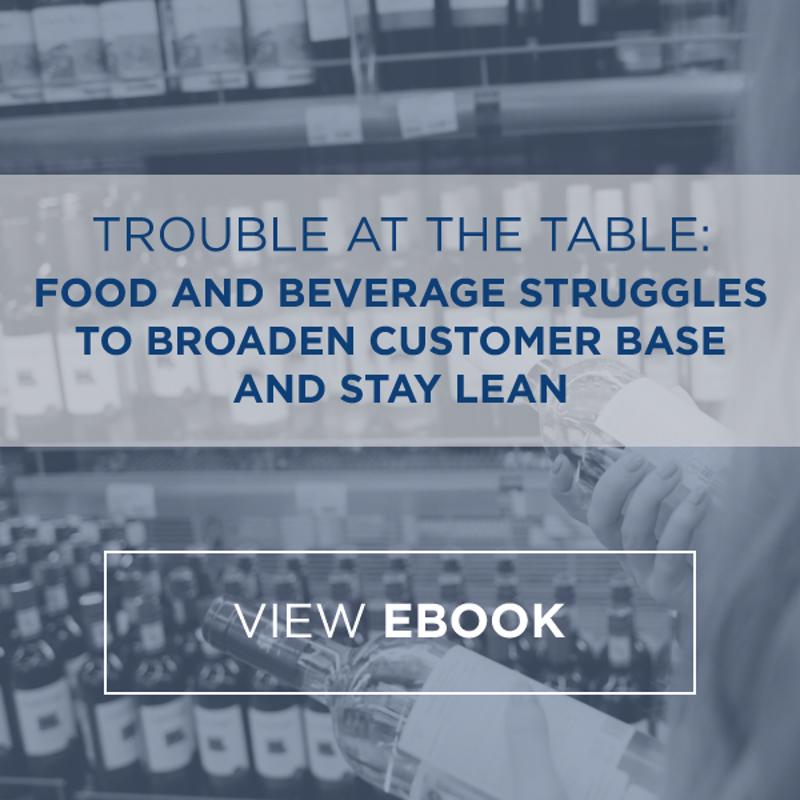-
Subscribe to Blog:
SEARCH THE BLOG
CATEGORIES
- Aerospace
- Asset Maintenance
- Automotive
- Blog
- Building Products
- Case Studies
- Chemical Processing
- Consulting
- Food & Beverage
- Forestry Products
- Hospitals & Healthcare
- Knowledge Transfer
- Lean Manufacturing
- Life Sciences
- Logistics
- Manufacturing
- Material Utilization
- Metals
- Mining
- News
- Office Politics
- Oil & Gas
- Plastics
- Private Equity
- Process Improvement
- Project Management
- Spend Management
- Supply Chain
- Uncategorized
- Utilities
- Whitepapers
BLOG ARCHIVES
- June 2025 (4)
- May 2025 (1)
- April 2025 (1)
- March 2025 (1)
- February 2025 (4)
- January 2025 (4)
- December 2024 (4)
- November 2024 (2)
- October 2024 (6)
- September 2024 (5)
- August 2024 (5)
- July 2024 (6)
- June 2024 (3)
- May 2024 (3)
- April 2024 (4)
- March 2024 (3)
- February 2024 (4)
- January 2024 (5)
- December 2023 (2)
- November 2023 (1)
- October 2023 (6)
- September 2023 (3)
- August 2023 (4)
- July 2023 (2)
- June 2023 (3)
- May 2023 (7)
- April 2023 (3)
- March 2023 (3)
- February 2023 (5)
- January 2023 (6)
- December 2022 (2)
- November 2022 (5)
- October 2022 (5)
- September 2022 (5)
- August 2022 (6)
- July 2022 (3)
- June 2022 (4)
- May 2022 (5)
- April 2022 (3)
- March 2022 (5)
- February 2022 (4)
- January 2022 (7)
- December 2021 (3)
- November 2021 (5)
- October 2021 (3)
- September 2021 (2)
- August 2021 (6)
- July 2021 (2)
- June 2021 (10)
- May 2021 (4)
- April 2021 (5)
- March 2021 (5)
- February 2021 (3)
- January 2021 (4)
- December 2020 (3)
- November 2020 (3)
- October 2020 (3)
- September 2020 (3)
- August 2020 (4)
- July 2020 (3)
- June 2020 (5)
- May 2020 (3)
- April 2020 (3)
- March 2020 (4)
- February 2020 (4)
- January 2020 (4)
- December 2019 (3)
- November 2019 (2)
- October 2019 (4)
- September 2019 (2)
- August 2019 (4)
- July 2019 (3)
- June 2019 (4)
- May 2019 (2)
- April 2019 (4)
- March 2019 (4)
- February 2019 (5)
- January 2019 (5)
- December 2018 (2)
- November 2018 (2)
- October 2018 (5)
- September 2018 (4)
- August 2018 (3)
- July 2018 (2)
- June 2018 (4)
- May 2018 (3)
- April 2018 (3)
- March 2018 (2)
- February 2018 (2)
- January 2018 (1)
- December 2017 (1)
- November 2017 (2)
- October 2017 (2)
- September 2017 (1)
- August 2017 (2)
- July 2017 (2)
- June 2017 (1)
- April 2017 (3)
- March 2017 (3)
- February 2017 (2)
- January 2017 (2)
- December 2016 (2)
- November 2016 (4)
- October 2016 (4)
- September 2016 (3)
- August 2016 (6)
- July 2016 (4)
- June 2016 (4)
- May 2016 (1)
- April 2016 (3)
- March 2016 (4)
- February 2016 (2)
- January 2016 (4)
- December 2015 (3)
- November 2015 (3)
- October 2015 (1)
- September 2015 (1)
- August 2015 (4)
- July 2015 (6)
- June 2015 (4)
- May 2015 (7)
- April 2015 (6)
- March 2015 (6)
- February 2015 (4)
- January 2015 (3)
CONNECT WITH US
Tag Archives: Indirect Costs
In April the Chinese Ministry of Commerce announced tariffs on 128 American goods, including almost eight dozen food and beverage products. The country instituted the duties, which range from 15 to 25 percent, in response to the American roll out of protective tariffs on aluminum and steel a month earlier. China is the leading producer and exporter of both materials, and therefore took exception to the move.
Unfortunately, as the two nations face off in this tariff war, American businesses may suffer, especially those in the food and beverage industry. The retaliatory Chinese tariffs have had an impact on a significant number of food and beverage enterprises, including fruit and nut growers, pork producers and winemakers.
Fruit and nut growers bear the brunt
Of the more than 90 American-made food and beverage products China targeted, approximately 78 are grown and harvested by fruit and nut growers, most of whom are based in California. In 2016, the sunshine state’s agricultural sector generated more than $46 billion, according to the California Department of Food and Agriculture. Fruit and nut products account for seven of the state’s top 10 agricultural exports. Almond sales alone totaled more than $5 billion in 2016, eclipsed only by grapes and dairy products.
Many of these items find their way to China, which, according to the California Legislature’s Nonpartisan Fiscal and Policy Advisor, consumes 35 percent of California’s pistachios and 15 percent of its oranges. Shipments have certainly slowed because of the new duties, a development that has put additional financial pressure on West Coast growers. NPR reported that pistachio prices in China increased from $3.50 per pound wholesale to $4.00 per pound following the implementation of the tariffs. The 15 percent hike has forced pistachio growers to completely reassess active logistics and sales strategies, many of which hinge on vendor service agreements. To put things into perspective, the pistachio duty of 15 percent, or $0.50 per pound, increases the shipping cost of each 44,000-pound container by $22,000.
To offset this expense and ship product to China, growers must eat the cost and renegotiate their contracts with logistics providers. Those that decide to divert their shipments to importers without duties often pay between $2,000 and $4,000 per rerouted container. Pistachio producers that simply recall their product back to port can expect to incur costs as high as $10,000 per shipment navigating U.S. customs. None of these options is favorable.
Winemakers face international competition
Wine producers in California and beyond are experiencing similar problems. The U.S. wine industry, which hinges on vineyards in California, shipped $197 million worth of product to China in 2017, capping off a decade that brought export increases of 450 percent, according to analysts at the Wine Institute.
But these gains did not come without struggle. Prior to the April tariffs, China had been collecting duties of 14 percent on American wine imports, disadvantaging U.S. vintners warring with ascendant competitors in Chile, Georgia and New Zealand, which are permitted to ship to Chinese ports duty free. With the new tariffs, total duties increased to 29 percent.
In the short term, this tariff hike will do little to damage the American wine industry. China has a relatively small wine market. Tariffs, however, could have long-term implications if they prevent winemakers from selling to the growing number of Chinese middle-class buyers set to gain purchasing power over the next decade.
Pork producers grapple with difficulties
An estimated 60,000 pork producers operate in the U.S., generating more than $20 billion per year, according to analysts from the National Pork Producers Council. Many of these businesses are based in the Midwest and South East, with Iowa and North Carolina boasting the highest production figures, according to the U.S. Department of Agriculture.
China is the fifth largest consumer of U.S. pork, which will now be subject to tariffs of 25 percent. Many American pork producers are not pleased with this development, despite China’s relatively low consumption levels. Some believe the tariffs will result in depressed profits which will ultimately undermine the local economies that pork producers support.
Pinpointing the ideal strategy
Earlier this month, The Wall Street Journal reported that China offered to purchase $70 billion in U.S. farm and manufacturing products in exchange for immunity from the aluminum and steel tariffs. This development has led some experts within the food and beverage industry to believe that China may soon lift its duties.
For the time being, however, food and beverage producers have no choice but to adjust to this new reality. How? By optimizing production workflows to reduce overhead. When enterprises embrace internal improvement efforts, production costs decrease, leaving room for additional expenses, including those associated with higher transportation costs due to tariff increases. For food and beverage makers navigating the Chinese market, this may be the most viable strategy for short-term success.
At USCCG, we’ve been working with businesses across numerous industries for 50 years, including the food and beverage industry, helping them adapt to marketplace transformations of all kinds. Connect with us today to learn more about our work.
What a time to be a private equity fund manager. According to Preqin, worldwide private equity holdings in 2016 reached a value of nearly $2.5 trillion. Private Equity liquid assets increased by $65 billion between 2015 and 2016.
Nestled amid that growth lies food and beverage, historically one of the more dependable performers in the PE portfolio. Investment banking and wealth management firm William Blair predicted that the number of M&A transactions in food manufacturing in 2017 broke records, toppling all other yearly totals in the past decade.
With that said, food and beverage acquisitions in the U.S. aren’t always the slam dunks they appear to be. When considering any acquisition, firms should always take the proper general precautions as well as those specific to the industry they’re targeting. What factors should PEs consider when deciding whether to invest in a food and beverage company?
1. Labeling regulations and court decisions
Class-action lawsuits involving food labels have rocked the food and beverage industry of late, and how appellate courts respond to this tumult might ultimately dictate how PE firms settle on their best bets for a profitable acquisition.
A recent report from the Institute for Legal Reform found that a few instances of possible misleading labels made up a majority of the litigation:
- Claims of “natural,” “preservative free” ingredients.
- Claims of “handmade” products or products “made in the U.S.” that aren’t.
- Fruit and beverage imagery on packaging to allegedly purport health.
- Slack fill packaging that includes extra space to protect contents but also bloats its appearance.
Any PE firm investigating a possible acquisition should examine any possibility that its targets will suffer from lawsuits, or that upcoming regulatory changes from the Food and Drug Administration will force its prospective holdings – and by default, the firm – to spend on shifting compliance. This includes a review of current and future packaging, labeling processes, sourcing relationships, etc., as well as location. The aforementioned study revealed that three-quarters of labeling-related federal litigation occurred in California, New York, Florida or Illinois. Another 10 percent occurred in Missouri, New Jersey and Pennsylvania.
2. Specialty food opportunities
These days, the size of an F&B business is not as important as growth opportunities within an industry niche. Big companies with nothing new to offer will not see as much favor as smaller companies with new products to offer the market or new value-adds that resonate with consumers.
But a new flavor that draws in a once untargeted demographic or an attractive superfood ingredient isn’t nearly as important as evidence of sustainability – in both production and demand. Is this change a long-term value or a flash in the pan? Does the company have the bandwidth to meet capacity increases? Are sourcing relationships for new products as beneficial as they could be? Answers to these questions and more will demonstrate whether a company has what it takes to earn your acquisition and subsequent investment.
3. Plans for direct-to-consumer model
Amazon’s acquisition of Whole Foods sent a message to food and beverage manufacturers and retailers alike: There’s no ignoring the disruption caused by the direct-to-consumer model.
Consumer packaged goods producers on the table for acquisition have likely spent the past few years in a defensive cost-cutting posture, hoping to reduce opex without compromising on quality and mild operational expansion. This may be the reason why PEs are eyeing these businesses to begin with.
Amazon/Whole Foods, however, represents an industrywide challenge of sorts. CPG companies, acquired or not, must formulate solid plans for evolving their products based on this market movement. Should they have these plans in place upon a visit from a hungry PE firm, that firm must weigh the quality of that strategy as a considerable part of their internal valuation. Put another way: If the food and beverage company has little to no plan for facing the Uberification of groceries, PEs must take note. It’ll mean passing on the venture entirely or expending resources to develop a strategy once the company is acquired.
Packaging is one such determinant. Innovation-minded food and beverage manufacturers are less inclined to worry about shelf appeal and more inclined to consider meal kits, cost-effective packaging designs built for shipping and perhaps even a change in portion sizes. These businesses, however, must support these plans with evidence of progress to win the attention of PE firms.
Of course, no acquisition is a sure thing. After all, PE firms specialize in transforming underperforming businesses. But if your organization has struggled with turning around an asset in your portfolio, contact USC Consulting Group today. Our operations management team will help you create a system for immediate and continuous improvement based on years of industry knowledge.
No industrial business that hopes to turn a profit in the era of Industry 4.0 can do so without selecting the right key performance indicators (KPIs). These metrics afford operations managers and senior-level decision-makers critical snapshots of how their plants operate and, more importantly, how they ought to operate in order to compete.
When it comes to Oil and Gas, the KPIs that processing facilities choose and utilize depend on their unique objectives. Even businesses within the same industry may seek vastly different insights from their data. But given the state of O&G in America today, which KPIs often make the cut?
1. Capital project efficiency
Between 2006 and 2013, budgets for capital expenditures into exploration and upstream oil production grew at many E&P firms, but have since failed to deliver on the allocation, according to a report from PricewaterhouseCoopers. Capex concerns have been no doubt exacerbated by steep decreases in per-barrel oil prices then and now.
As the Oil and Gas industry as a whole moves into more challenging drilling and extraction environs, it should consider how to visibly articulate capex project efficiency, a multifaceted measurement that combines adherence to stricter budgetary allowance, maintenance spend, and project overrun as well as creep.

2. Attendance and completion of safety training
Safety is notoriously difficult to track. This particular KPI can give on-site safety managers a peek at potential dangers to come. Oil and Gas needs this now more than ever – according to E&E News analysis of data from the Occupational Safety and Health Administration, severe work-related injuries pertaining to “support activities for oil and gas operations” occurred at a rate of nearly 149 per every 100,000 workers. Severe injury includes amputation, in-patient hospitalization, or loss of an eye.
It stands to reason that those who undergo safety training courses will act safely and avoid injury. Safety managers must therefore address any barriers suppressing attendance or completion, and KPIs tracking both will alert them to such issues, especially if they monitor the rate at which completion occurs over time. Advocacy for training will ensure investment into these programs pays off as soon as possible, a crucial factor as many O&G companies face tight margins.
3. Leaks per X customers
Midstream oil and gas firms oversee an incredibly long and intricate distribution network, which requires an understanding of its environmental impact. U.S. Oil and Gas companies manage 2.4 million miles of energy-related pipe and 72,000 miles of crude-oil pipe, according to Pipeline101.org, a website maintained by the Association of Oil Pipe Lines and the American Petroleum Institute.
Aligning maintenance spend with environmental regulations requires a deeper look into how often leaks occur, in relation to customer revenue, and which assets incur the highest repair costs.
Although these KPIs have driven success for others, their real value lies in how facilities implement them through continuous improvement initiatives. To speak to organizational management consultants on how to turn KPI insights into actions, contact USC Consulting Group today.
Asset-intensive industries have cautiously maintained their commitment to present and future major capital investments in the wake of the 2008 economic collapse. Total capital expenditure, which includes the purchasing of both equipment and structures, has grown without pause since 2009, according to a recent report from the U.S. Census Bureau.
But ventures today are not the same as they were before 2008. They now come with new perspectives on how best to improve reliability across the business with tightening margins, ensure throughput or productivity by reducing downtime and preserve mission-critical assets effectively, intelligently, and affordably throughout their life cycles. To some degree, all industries with large-scale assets cared about these principles in the past, but now many – energy, oil and gas, process industries, telecom – must do so in the face of trends rapidly transforming their sectors.
Considering major capital investments? Here’s how enterprise asset management and maintenance can save you from dire financial straits.
Are you caught in an asset utilization trap?

Industries with heavy assets owe it to themselves to develop innovative and more robust asset management practices, lest they fall victim to an endless cycle of profligate capital spending.
Let’s use an example industrial businesses have no doubt experienced: how to respond to low asset utilization. A mining company crunches the data on month-over-month utilization for its fleet of articulating vehicles. Asset management metrics return a utilization rate of around 45 percent, same as it’s been for more than a year. Utilization has plateaued, so company stakeholders decide that increased capital investment on newer trucks will resolve their issue with stagnant asset-related revenue generation.
Chances are good that it won’t, definitely not if low utilization stems from maintenance and scheduling. An ill-prepared asset management program in charge of a larger fleet will only exacerbate the utilization problem, not fix it.
If this mining company, or any other asset-reliant business for that matter, truly believes in the doctrine of continuous improvement, they will turn their attention to the real culprit: underdeveloped asset management operating systems and reliability-centered maintenance. Here’s how to build out these areas and create an asset support network that drives higher utilization:
Get granular with preventive or predictive maintenance
All industries that rely on heavy equipment or high-tech plants must gradually, but assuredly, move toward a proactive versus reactive stance on enterprise asset management. Repairs and calibration must either happen on a time-based cycle (preventive maintenance or PM) or through advanced sensors and preemptive failure detection (predictive maintenance or PdM).
However, these are very broad recommendations asset management teams will probably already understand the value of. What specific details should PM and PdM adopters lock onto if they want to boost utilization?
Pinpoint ideal KPI metrics: Find the measurements that align best with your mission as an organization and can report capably on issues surrounding asset utilization, then automate the acquisition and visualization of those measurements so you understand them in real time.
Investigate data hygiene: Key performance indicators must be accurate to serve operators, technicians, and supervisors. Review where your data comes from, who handles it, and what may adversely affect its veracity.
Standardize cross-functional transparency: Businesses that democratize information allow their workers to contribute to and analyze all data related to asset health. Build visibility into the entire asset management operating system – reporting, inspecting, scheduling, repairing, confirming, and documenting – and leave no area of your business in the dark.

Devote more resources to root cause failure analysis
Are mechanical failures on critical assets really the result of something mechanical? You’ll never know without comprehensive root cause failure analysis (RCFA).
Although deficiencies or outright failures may present as technical glitches, best-in-class asset management processes must dig below the surface to reveal what’s actually causing asset functionality – and ultimately utilization across the board – to drop.
Returning to the hypothetical mining company from before – perhaps utilization rates were low because heavy trucks require a lot of maintenance. What kind of maintenance? Technicians report back that the most common work order is repair or replacement of shock absorbers. To the untrained eye, this appears rational given the rough terrain and capacity requirements of the job. But practitioners of thorough root cause failure analysis don’t stop there. They ask the following:
- Are these universal issues experienced by competitors?
- Are these failures caused by the roads we drive on?
- According to the manufacturer’s specifications, are we overloading these trucks?
- Is a lack of communication between operators and maintenance professionals to blame?
Immediate remediation of one, some, or all of these concerns will improve the reliability and availability of assets, raise utilization rates, and may even deter unnecessary capex and opex spending. In order to achieve this high level of awareness over the condition of capital investments, however, asset-intensive businesses must first invest their time and effort into fleshing out RCFA.
Want to learn more about how to improve asset utilization through asset management and proactive maintenance? Contact USC Consulting Group to speak to an operations management consultant today.
Competition in the food and beverage industry has always been high. When one-sixth of every dollar produced by all U.S. industrial businesses comes from F&B, not much else demonstrates the same level of value to investors. Increased market concentration, however, has pushed companies back on their heels and challenged them to rethink their operations.
It’s first come, first served in the world of food and beverage manufacturing. Where should your business focus its attention if it wants a seat at the table?
Agility in the face of anything and everything
Food and beverage, by nature, craves a streamlined, consistent production process. How else could manufacturers expect to produce against such high and persistent demand for their goods?
Yet despite that understandable urge to standardize wherever possible, F&B firms cannot deny the myriad of variables they contend with daily: world economies affecting all the places from which they source their ingredients, regulations on how to produce and ship goods, consumer opinions and interests regarding packaging and merchandising, etc.
Building fixed production processes without any capacity for adaptation is like expecting your car’s cruise control to steer for you. Similarly, food and beverage companies must imbue their processes with enhanced responsiveness to fluctuations, particularly when it comes to their supply chains. U.S. bread producers, for example, no doubt remember how the wholesale price of eggs skyrocketed in 2015 because of an outbreak of avian flu. Since then, businesses have undoubtedly built disaster recovery plans around potential shortages of key supplies, perhaps even created whole new products with the market strength to carry them through tough times.
But why wait for a crisis to plan for one? Businesses in industries like F&B that mass produce ought to take a page from the custom manufacturing playbook: There is a lot competitive value in learning how to lean into a curve, and not only to avoid risk, either.
Big data should mean speedier R&D
Leveraging consumer data has never been a strength for food and beverage producers, but it is fast becoming an incredible indicator of value as millennials take over supermarket sales across the country. Between 2010 and 2015, the top 25 U.S. Food and beverage companies lost a combined $18 billion to outliers, according to Fortune senior writer Beth Kowitt. Who diverted those funds to smaller industry players? Primarily millennials.
How did those businesses convince millennials to do it? They anticipated the desires of the modern consumer and had products to match those desires available. Nothing new there, but these companies performed these actions at record-breaking paces.
Consumer trend cycles are only accelerating. Any business that fails to innovate with customer data rapidly and accurately will continue to lose market share to small businesses that can. In recent years, organizations such as Diamond Foods and Nestle have invested significant capital in research and development facilities that experiment with recipes and packaging. Nestle even has test kitchens where its staff studies how consumers interact with products in a real-world setting. Monitoring in house has the added benefits of confidentiality, direct analysis, and immediate application, too.
When thinking of all the best ways to leverage end-user data, businesses should not limit themselves to information technology but rather utilization in action. How fast can you move when the next great idea presents itself?
Focus on freshness at the retail level
What’s the most widely known unwritten rule of healthy shopping? If you want to eat better, shop around the perimeter of the grocery store where you find fresh produce, whole milk products, and unprocessed proteins.

When customers buy for freshness, should you go to them or make them come to you?
Whether or not that homespun shopping philosophy is actually true, F&B companies have responded as though it is by acquiring brands with a presence in this territory, as well as developing goods that can break into these areas. More than one-fifth of shoppers spent more money on “fresh perishable items” in 2016 than 2015, and more than one-third base their decisions on where to shop on the “quality and variety of fresh foods,” according to research from the Food Marketing Institute. It’s gotten to the point where retailers are using freshness to define their entire retail operations.
To compete, manufacturers must think less about merchandising and more about how to align their product messaging around freshness with that of how their retailers relate freshness to customers. That includes, but is not limited to, marketing how minimally processed goods are or reducing the sheer number of ingredients in certain product recipes. Not only are these changes promotional, but they can also lead to material and production savings if manufacturers play their cards right. Once customers associate a certain product with freshness, they will happily travel to whatever section of the supermarket that product is housed in. The trick is planting the seed.
For more information on fleshing out a competitive Food and Beverage strategy, contact a USC Consulting Group representative today.
The home appliance market has a lot to celebrate: As the housing market continues to recover – however slowly – new homeowners with disposable incomes will seek brand-new appliances to furnish their spaces. Yet, appliance manufacturers ought to stay aware of burgeoning trends that could impact their product designs, compliance efforts, and the reception of their goods.
1. Possible housing shrink
For the most part, American homes are bigger now than they have ever been – according to U.S. Census Bureau data released in 2015, the average single-family house ballooned by more than 1,000 square feet between 1973 and 2014.
However, appliance manufacturers should refrain from letting such growth lull them into a false sense of security over the size of their products. Other market factors indicate the economic upturn that empowers young homebuyers could also push them to be more conservative with space. Both the median and average sizes of newly built single-family homes plateaued in the last few years and have even begun to drop.

Are American homes trending tinier? What does that mean for the home appliance manufacturer?
Could this be the start of a new generation of smaller entry-level homes? If so, appliance makers will need a strategy for quickly developing and producing goods with smaller footprints.
2. Easing refrigerant regulations
Earlier this year, the Association of Home Appliance Manufacturers pledged to stop using hydrofluorocarbon refrigerants in next-generation goods, phasing them out entirely by 2024. The organization asked for assistance from both the United States and Canadian governments, as current regulations may be too strict for alternative refrigerant options under consideration.
With all appliance makers have done in recent years to increase the energy efficiency and environmental sustainability of their products, refrigerant changes could place financial and operational strains on residential and commercial refrigerator, freezer, and air conditioner manufacturers looking to stay green. Participation from the AHAM should be seen as a give-and-take: Appliance makers will make the switch, if the government helps businesses shoulder the burden by loosening materials regulations.
Effective earlier this month, the U.S. Environmental Protection Agency did end up expanding feasible HFC substitutes to include propane. However, the appliance industry should take note of the estimated annualized compliance costs for 100 affected companies included in the EPA notice: between $58.8 million and $71.3 million depending on a 3 percent versus 7 percent discount. Manufacturers should begin formulating a basic framework of the organizational change required to keep production swinging, risk management on task, and operational costs even.
3. Consumer input online
While manufacturers may have the retail “middleman” separating them from end users, the expanding online marketplace for appliances could open a direct connection – and not necessarily in a good way.
PricewaterhouseCoopers research shows today’s consumers still choose to purchase their appliances at brick-and-mortar stores over online – 59 percent to 29 percent respectively – but the gap is closing fast. Mobile devices also make it easier for shoppers to investigate in-store goods before buying, which should worry manufacturers who haven’t vetted their digital presence and addressed any concerns flagged on the internet by former customers. A bad review with good search engine optimization can hang like an albatross around a company’s neck.
Responsiveness to customer concerns in online forums will only better a business as we push further into the future. As appliance manufacturers strive for innovation in their products, they should give equal attention to the channels of hype surrounding their brands.
Six Sigma hates waste. If a manufacturing plant plans on getting any leaner, its executives, managers, and supervisors should be on the prowl for areas to streamline workflow and cut out unnecessary steps.
Depending on the industry in question, inventory may play a vital role in on-site operations. Whether inventory is used for holding spare parts for the company’s most important assets, managing SKUs awaiting completion or transportation, or storing raw materials integral to the manufacturing process, inventory management can be pivotal to efficiency.
Inventory can also, however, become a breeding ground for waste, and the stresses of an unkempt inventory can permeate throughout disparate operations, creating backlog, downtime, and unmet expectations. Let’s take a look at a few examples of how an inventory without proper curation can lead to all different kinds of waste.
Before we go any further
Though it may seem rather obvious, inventory management really only impacts industries that actually maintain a comprehensive inventory. With the rise of just-in-time supply services and kitting, many inventories across a number of different industries have been thoroughly rationalized to the point where harping on them any further would be, in a word, pointless. Sure, organization throughout a company is an ideal worth promoting, but further investing time, money, and energy into an inventory after taking certain measures will not provide an ample return.
According to a study on the link between operational performance and inventory management published in the Journal of Operations Management, only two-thirds of industries investigated experienced substantial gains with a leaner inventory. As the authors of the study suggest, understanding the role inventory plays in an individual business and measuring how deeply ingrained it is in ancillary processes. Otherwise, companies attempting to adopt a leaner mindset will expend resources unnecessarily, resources better spent on making actionable changes in other areas where they’re needed. Managing inventory waste for some will merely be a surface adjustment, but for others, it can clue them into subcutaneous operational deficiencies that can return serious value if unearthed.
Waste in waiting
In an interview with IndustryWeek, Frank Hill, director of manufacturing business development for Stratus Technologies, said 3 out of 10 manufacturers run into unplanned downtime, the number of large downtime events are on the rise, and each one costs roughly $17,000 to navigate. With so much at stake, it’s no wonder why manufacturers push to keep their assets continuously operational.
That said, downtime for many in the manufacturing sector only pertains to failed assets or big-time disruptions. That isn’t always the case. Downtime can also include any time spent not performing the value-added tasks at hand. Machinery can be fully operational, employees can be at the ready, but downtime can still occur. Rooting out the culprit might lead lean teams right to inventory.
Builds or repairs might require components held in inventory, which means employees tasked with these duties will need to locate them as fast as possible to complete their respective jobs. Without a regimented, intuitive system for hunting down these things, workers waste time between tasks. While it may only be a matter of minutes, these gaps in performance add up incrementally. To prevent these undercurrents of waste from siphoning successes, ask: What systems or procedures would a manufacturer have to enact to ensure its employees find what they need exactly when they need it?

Moreover, in the event of a large-scale downtime event, what sorts of low-tech, high-value activities can employees perform until they can return to their work? Manufacturers should develop fail-safe measures against wasted opportunities. In fact, so long as it integrates well with a company’s downtime objectives, inventory management – like cleaning, organizing, and shelving – can be something employees attend to during the wait to return value to the company during a downtime deficit.
Waste in damaged materials
Shrinkage is like a monster with many heads – a single swipe of a sword might not be enough to take the beast down. However, everything has a weakness, and for shrinkage, it may reside in catalysts entrenched in peripheral operations and processes.
Root cause analysis might confirm shrinkage directly correlates with administrative shortcomings or underutilized metrics during the procurement stage. For instance, if a manufacturer’s inventory is lousy with a specific type of fastener, it could be because orders for that component don’t legitimately reflect updated supply/demand data. As such, administration has been placing orders for parts employees don’t need and already have too many of. Additionally, supplier-manufacturer relations could also play a role in waste. If a particular component is rare or difficult to produce, suppliers may pigeonhole manufacturers into procuring more than they need. Without an effective system in place auditing and monitoring said inventory, manufacturers could be overspending upfront.
So how can manufacturers determine if their shrinkage is bad enough to devote serious resources toward? According to a study conducted by Supply Chain Visions and the Warehouse Education and Research Council, it’s all a matter of finding what percentage of an inventory is lost to shrinkage. The average inventory sheds between 0.046 percent and 0.07 percent of its contents to shrinkage, while a score of less than 0.005 percent would be optimal and industry-leading. If, however, a manufacturer’s shrinkage hovers above 1.46 percent, they stand to reap the most out of reining in its inventory.
Waste in avoiding the real problem
Similarly to the aforementioned section, inventories overburdened with spare parts could signal manufacturers aren’t addressing major issues with their on-site assets. If inventories must maintain an above-average stock of replacement components for subassemblies constantly wearing out, supervisors have essentially made a habit out of treating the symptoms and not the disease.
Instead of worrying about additional spare parts, manufacturers should instead focus on the reasons why their valuable assets aren’t performing as they should. Tracking down the primary cause of even the most minor malfunctions will not only save on costs related to managing spare parts, but also completely eliminate the downtime required to replace the worn out component, returning considerable efficiency back to the manufacturer who takes the time to truly investigate.
Where do supply chains need the most oversight? How can enhanced analytics maximize efficiency and help these areas operate more smoothly?
Big data applications in an asset-intensive industrial setting like a manufacturing plant or an oil refinery need no introductions. Business leaders in these sectors have long awaited the ability to monitor on-site equipment performance in all its granularity, measure it against historical data quickly, and aggregate unstructured gigabytes of data from disparate machinery into easily interpreted and configurable dashboards. Now that it’s readily available to them, the whole thing feels like a homecoming.
Yet, many organizations have been unreasonably reluctant to carry over big data analytics into supply chain management, arguably an area in every business particularly subject to an abundance of complexity. According to an Accenture study, although 97% of executives are aware of the benefits big data analytics bring to supply chains, only about 1 in 6 had such measures in place as of 2014.
Smarter supply chains cut costs for everyone involved, supplier and client alike, so long as partnerships develop and act on the right metrics. Where do supply chains need the most oversight? How can enhanced analytics maximize efficiency and help these areas operate more smoothly?

Use data to deploy supply chain vehicles safely and cost-effectively.
Fleet Management
Businesses concerned with fleet metrics tend to focus primarily on the KPIs directly related to spend, such as cost per mile, fuel efficiency, and even controlled vehicle re-marketing. However, there’s something to be said for stretching analytics viewpoints to include long-term value adds instead of “pinching pennies” in the short term.
Condition-based maintenance programs, for instance, typically utilize complex data sets to determine if and when vehicles need servicing. As businesses switch to “just-in-time” inventory management models, the importance of fleet availability increases, as does risk. A decommissioned truck or van not only places immediate revenue in jeopardy from a customer service perspective. It also usually requires expensive emergency repairs and may even compromise driver safety in certain circumstances. As such, supply chain and fleet management should coordinate on data-driven oversight to keep transportation operational throughout its life cycle.
Weather
When winter storm Juno froze New York in 2015, analysts estimated its economic toll would cost businesses between $500 million to $1 billion. A single storm can do a number on service and profitability, which is why any supply chain management strategy would be incomplete without weather forecasting.
“Businesses should use weather forecasting as a springboard for supplier or 3PL negotiations.”
That said, nothing is more predictably unpredictable than meteorological activity. Knowing a storm is on its way doesn’t really do much to prevent or preempt its impact to a substantial degree. Businesses should use weather forecasting as a springboard for supplier or 3PL negotiations. Business leaders should leverage data to inject flexibility into service contracts beneficial to both sides, absolving all parties of blame when weather is at its worst and hopefully securing carrier engagement/satisfaction in the process.
Decision-makers should also develop robust in-house policies for operators, drivers and warehouse crews diverse enough to accommodate any eventuality. That way, workers know exactly what is expected of them when different phenomena occur. Heavy rain? Drivers should execute safer, more defensive driving strategies on the road as defined by supervisors. Snowfall shuts down a major thoroughfare? Warehouse pickers should switch over to other value-add duties like cleaning or inventory management to avoid labor cost waste.
Demand Forecasting
This one is almost so obvious, it goes without saying – supply chain management hinges on customer demand, where it will be tomorrow and how quickly businesses can respond to it.
What might not be nearly as evident is the effect misaligned supply/demand relationship has on the business beyond supply management, in the form of surpluses, steep product or service markdowns, and inadequate customer service. Businesses shouldn’t merely turn their attentions to the metrics supporting best practices, but set notifications and alarm bells on KPIs that may forewarn them of potential supply chain mismanagement while it’s still able to be resolved.
The Freight Debate: How should businesses approach freight spend management to achieve the greatest results?
When businesses suffer from high operational costs, they don’t start by making indiscriminate cuts to balance their budgets. Instead, they look for intelligent ways to reduce wasteful expenses without compromising productivity.
In an effort to rein in spending, business leaders may turn toward freight optimization. After all, trends like low diesel costs push many companies to invest more in ground transportation over air travel. With ground freight worth more to operations, it would be wise to ensure nothing about logistics is left to chance. How should businesses approach freight spend management to achieve the greatest results?
Know your organization’s ‘lanes’ inside and out
Manufacturers, in particular, always have a complex, multifaceted network of materials and finished goods coming and going. That said, these businesses open themselves up to potential failure if they do not complement this “big picture” view with a more nuanced understanding of each dynamic logistics component.
Gathering information on all supply lanes is a great place to start, but this data collection isn’t enough. What businesses find therein must feed into models for change. For example, if a company has experienced significant growth in its time contracted to a legacy freight handler, perhaps it’s time to negotiate for better rates or services, seeing as though the company has provided the logistics provider with more business.
Not all pieces of the logistics puzzle are the same
Picking and choosing where to hone logistics spend may not be an exact science, but it certainly isn’t something that can be done without a little research into the largest cost areas. According to the Federal Highway Administration, average overall logistics costs break down into three major expenses: transportation (63%), inventory-carrying costs (33%), and logistics administration (4%).

“Nearly 80% of transportation logistics spend goes toward trucking freight.”
Right from the start, it’s plain to see where the weightiest expenses lie. Within transportation costs exclusively, nearly 80% of transportation logistics spend goes toward trucking freight. Discovering methods to optimize shipping for grand transportation rates – as well as the rate at which materials and products get shipped – therefore deliver the highest potential for return on investment.
Similarly, when looking exclusively at inventory-carrying costs, two-thirds of costs stem from issues like taxes, insurance and general materials depreciation. Programs aimed at reducing shrinkage may help mitigate spending, but ultimately manufacturers may want to move away from traditional inventory models to truly rid themselves of seemingly unavoidable costs associated with a full warehouse.
Sticker price isn’t the only thing worth bargaining for
The Council of Supply Chain Management Professionals reported nearly half of all logistics providers plan to see “strong revenue growth” in 2016. However, the survey also showed freight handlers expect to invest in equipment and services that will simultaneously optimize costs for their customers. In fact, more than 40% anticipate rate negotiation with their clients, as well as increased attention to things like freight consolidation in trucks (40%) and process automation (34%).
What does this mean for the businesses working with these providers? Simply put: Ask and ye shall – most likely – receive. If business leaders bring a well-conceived plan to the negotiation table that benefits their operations and helps freight handlers advance their service portfolios, the chances of both sides walking away with an agreement are considerably good.









